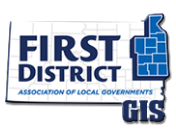The first step is the assessment or valuation of the property. The annual assessment date is November 1st of two years ago. To illustrate this, the Director determined the value on November 1, 2020 for the tax year of 2021 for taxes being paid in 2022.
The assessment notice that the taxpayer received in March of 2021 is for taxes payable in 2022. The assessment notice represents the full market value of the property as if the property is offered for sale on the open market. The Director evaluates all sales to make a determination if property classes are properly assessed. This method is used for all non agricultural land and all buildings. Agricultural land is valued using the productivity method. The productivity method uses each parcel soil type multiplied by its individual rating which is multiplied by the number of acres of that soil type. The sum of the individual soil type values is used to calculate the agricultural land value for a particular property.
The assessment notice includes an appeals process for the taxpayer to dispute the assessed value of the taxpayer's property.
Local Board of Equalization: Written appeal must be filed with the clerk of the local board on or before the Thursday preceding the third Monday in March. Residents who live outside of the town or township where the property is located would appeal directly to the County Board of Equalization.
For the County Board of Equalization and Consolidated Board of Equalization appeals must be filed with the County Auditor on or before the 1st Tuesday in April.
Appeals for the current assessment year are for taxes payable the following year. Please call the Director of Equalization office with any questions you may have about the assessed value of your property. Quite often we can give you information and better explain the situation you are questioning.
Before the taxes can be calculated, the valuation must be "equalized". The Department of Revenue provides the equalization factor for agriculture and non-agriculture property classes that the county must use. The equalization factor is then applied to the assessed value to adjust the assessed value to the taxable value on your tax notice.

